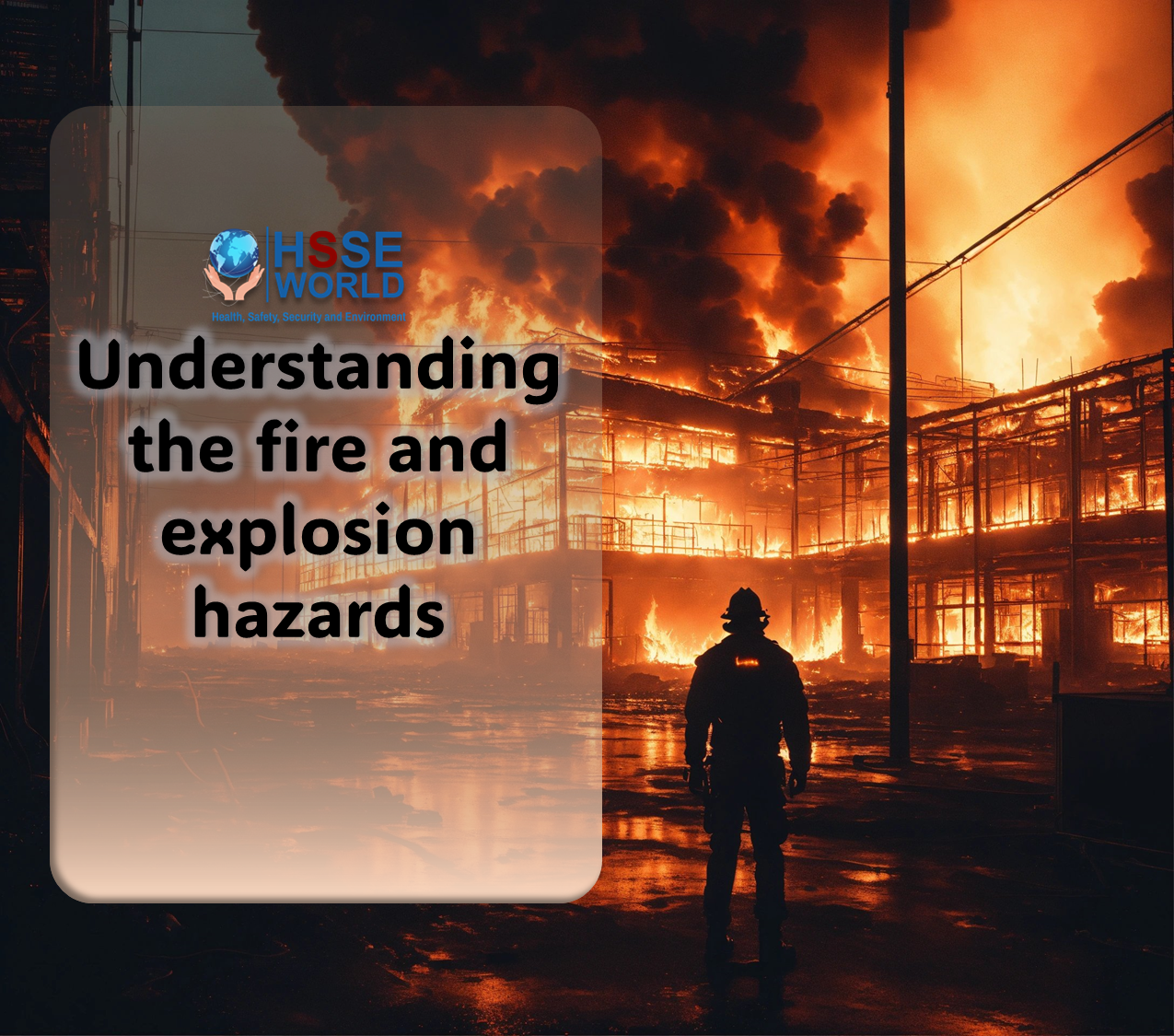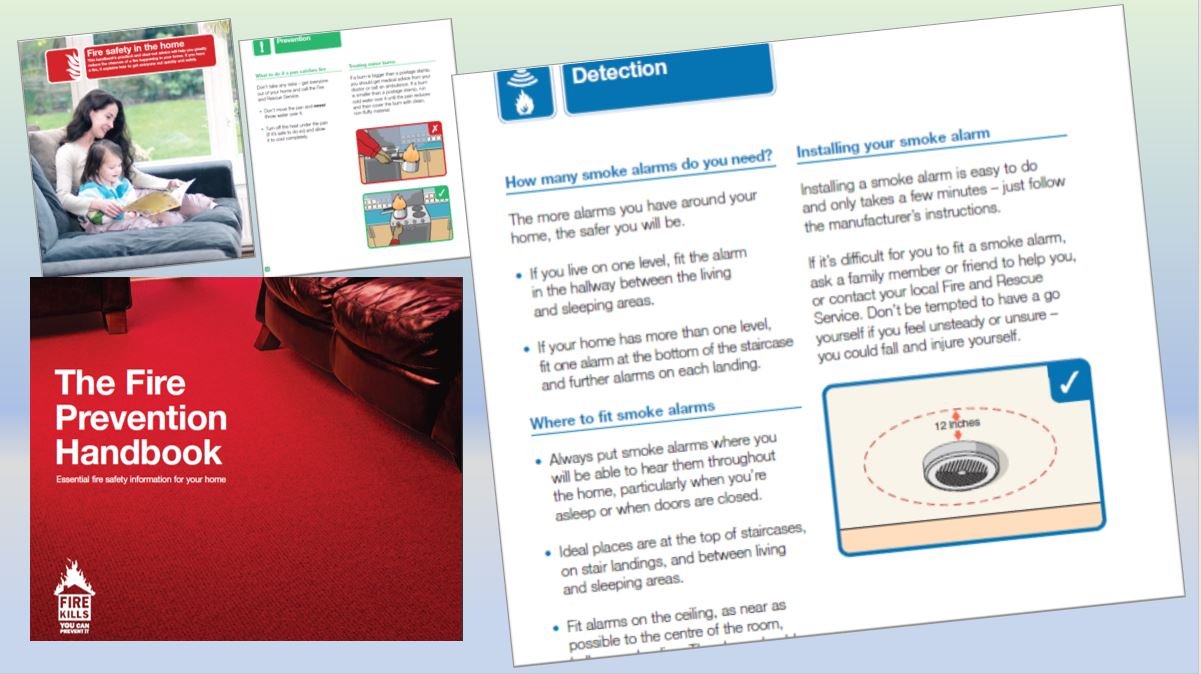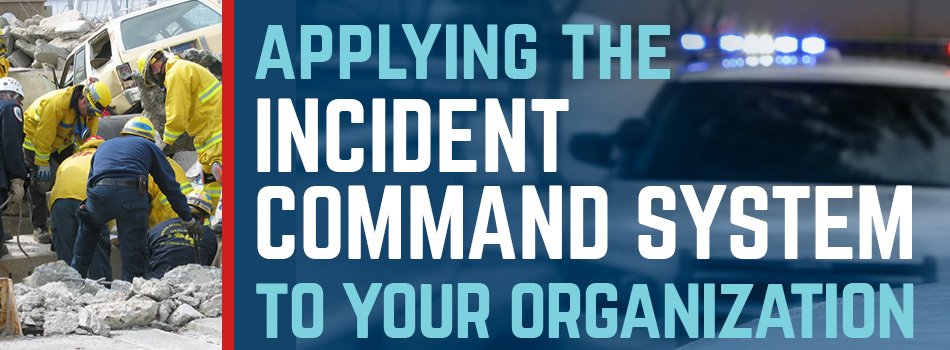Fire and explosion hazards pose significant risks across various industries and environments. From industrial plants and laboratories to residential buildings and commercial establishments, the potential for fires and explosions exists, and understanding these hazards is crucial for ensuring safety and preventing catastrophic incidents. In this blog post, we will delve into the fundamental concepts of fire and explosion hazards, exploring their causes, characteristics, and the importance of proactive measures in mitigating these risks.
Also Read: Safety Flash: Explosion during Welding Operation

General
Understanding fire and explosion hazards is the key to their minimization risks. This applies at all levels of an organization from the directors to those designing and operating the facilities. This knowledge should be used to inform people making critical decisions in both design and operation. In other words, the knowledge should be used proactively to reduce risk.
Generally speaking, the consequences of fires will depend on:
- Flame intensity – that is heat flux (or surface emissive power, SEP) and flame temperature, which depend (amongst other things) on the hydrocarbon being combusted and the availability of oxygen (for complete combustion).
- Fire duration – the loadings on equipment impacted by fires will depend on the fire duration and intensity, so less intense fires with longer durations can produce similar loadings to more intense fires with shorter durations.
- Availability and effectiveness of mitigation measures – these may include firewater deluge/monitors, and foam deluge/monitors.
- Heat load and thermal dose for personnel safety and escape, the integrity of equipment and supporting structure.
- Effects of smoke (thermal radiation, obscuration of escape routes, toxic inhalation).
The overpressure caused by an explosion will depend upon:
- Hydrocarbon gas or gas mixture present.
- Cloud volume and concentration.
- Ignition source type and location.
- Confinement or venting surrounding the gas cloud.
- Congestion or obstacles within the cloud (size, shape, number, location).
- Cloud density
- Cloud non-homogeneity.
- Ignition timing.
Jet and spray fires
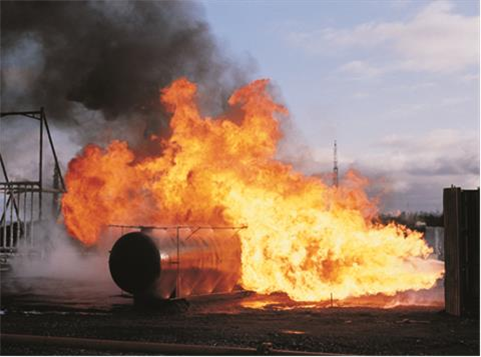
Jet fires result from ignited continuous releases of pressurised flammable gas. Spray fires may occur for ignited releases of flammable liquids under high pressure, where the high velocity of release results in a spray. The momentum of the release carries the material forward in a long plume of entraining air to give a flammable mixture. Jet fires and spray fires have high flame temperatures and can produce very high-intensity thermal radiation. The high temperatures pose a hazard not only from the direct effects of heat on human beings but also from the possibility of event escalation. For instance, if a jet flame impinges upon a target such as a vessel, pipe or structural member, it could cause an unprotected target to fail within a few minutes.
Pool fires
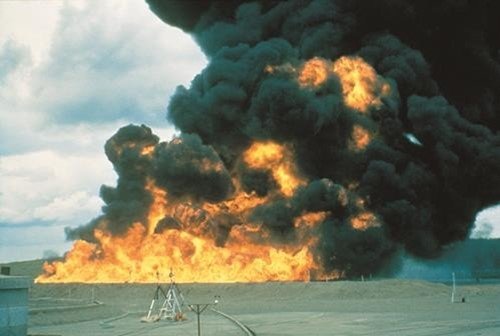
If a liquid release has time to form a pool and is then ignited before the pool evaporates, then a pool fire results. Because they are less well aerated, pool fires tend to have lower flame temperatures and produce lower levels of thermal radiation than jet fires, but can produce more soot (due to incomplete combustion). Although a pool fire can still lead to structural failure of items within the flame, this will take several times longer than in a jet fire. An additional hazard of pool fires is their ability to move. A burning liquid pool can spread along a horizontal surface or run down a vertical surface to give a running fire.
Flash fires
If a gas release is not immediately ignited then a vapour cloud may form. If the vapour is unconfined and is less dense than air then it will disperse upwards (as will be the case with many natural gas releases). However, a cloud that is denser than air, such as a butane release, will slump and will move downwind at deck level. Any unconfined flammable vapour cloud that is ignited will burn very rapidly with a sudden flash, the combustion of the cloud typically completing in a few seconds. If the source of material that created the cloud (gas release) is still present then the fire will flash back to the source giving a jet fire or pool fire (depending on the nature of the release).
The main aim of modelling flash fires is to estimate the size of the vapour cloud. Inside the cloud, direct contact with the burning vapours will cause fatalities, but the short duration of the fire means that thermal radiation effects are not usually significant outside the cloud. When considering the effects of flash fires it is often anticipated that only superficial damage will be sustained to most equipment, e.g. paint burning away or charring of unprotected cabling.
Fireballs
Immediate ignition of releases, following the catastrophic failure of a vessel or full bore rupture of a pipe containing a flammable gas or a superheated liquid, may result in a fireball. With regard to gases, leaks are more likely to result in a jet fire. Fireballs have very high thermal radiation, similar to jet fires, although the duration of the event is short (so for escalation events jet fires generally have more severe consequences than fireballs).
Boiling liquid expanding vapour explosion
If a flame from a jet fire or pool fire impinges on a pressurised vessel containing a flammable liquid then the steel of the vessel wall will become hot. This heat will be transferred to the liquid, which may start to boil, venting vapours through the relief valve. If the flame remains in contact with a part of the vessel containing liquid then the heat is transferred into the liquid and is dissipated through the effect of boiling, preventing the steel from overheating to the point of failure. However, if the flame is in contact with the vessel alongside the vapour space, then the steel will rapidly overheat and fail, causing a sudden release of the material in the vessel. This liquid will then ignite to form a large fireball rising up over the vessel and producing high levels of thermal radiation. This event is called a boiling liquid-expanding vapour explosion (BLEVE). In addition to heat, a BLEVE will also generate high-velocity missiles from the fragments of the pressure vessel and may generate overpressure due to the rapid flashing of the liquid. The greatest BLEVE danger arises when a jet fire impinges on a vessel; in this situation, a BLEVE may occur within a few minutes.
Explosion
Under certain circumstances, the delayed ignition of a vapour cloud can result in the generation of pressure as well as the heat produced by the combustion of the vapour. Pressure generation can occur because of the confinement of the vapour cloud or acceleration of the flame to high speeds (or a combination of both of these factors). Pressure generation by flame acceleration leads to a vapour cloud explosion (VCE). Flame acceleration is generally caused by the interaction of the explosion with process congestion and would be described technically as a ‘deflagration’. However, if the flame front travels fast enough there is the possibility of the deflagration undergoing a transition to a ‘detonation’, involving very severe overpressures and the pressure development would no longer rely on interaction with process congestion. This is referred to as a deflagration to detonation transition (DDT). Most VCEs offshore would fall into the category of deflagrations.

Effects on people may be primary, secondary or tertiary. The primary effects are injury to the body because of the pressure change (overpressure). Secondary effects are injury because of fragments or debris produced by the overpressure impacting the body, e.g. due to building collapse. Tertiary effects are injury because of the body being thrown by the explosion and impacting stationary objects or structures. An important aspect of an explosion is that it can result in damage to a facility that escalates the original release into a scenario where there may be multiple releases and fires taking place before there has been any opportunity to blow down the process systems. The potential for this to be combined with damage to safety critical equipment can result in some of the most hazardous situations for the workforce. One of the primary objectives of the design process is to reduce the potential for such escalation as far as reasonably practicable.
Read More: Everything you need to know about the explosion
Conclusion:
Understanding the nature of fire and explosion hazards is crucial for creating a safe environment, whether it be at home, in the workplace, or within industrial settings. By comprehending the fundamental principles of these hazards, their causes, and the necessary preventive measures, we can actively work towards minimizing the risks and safeguarding lives and property. In future blog posts, we will delve deeper into specific aspects of fire and explosion safety to provide a comprehensive understanding of these critical topics.
Also Read: Keys to Sustainable Safety and Ergonomics
For more safety Resources Please Visit Safetybagresources

